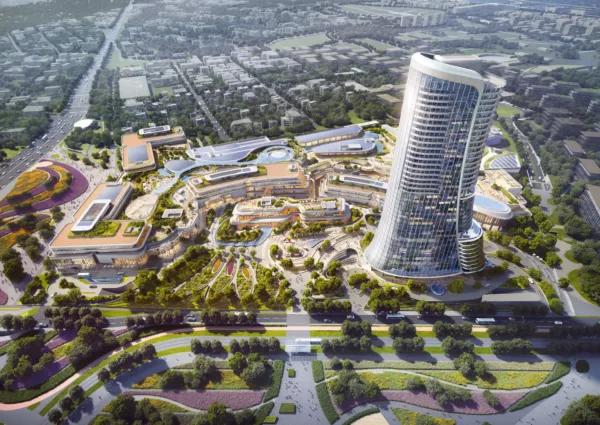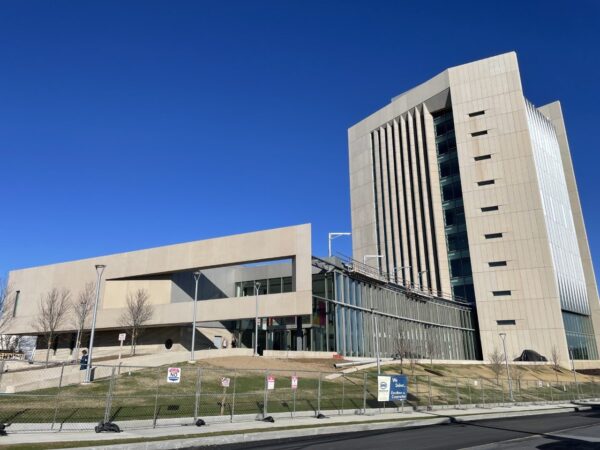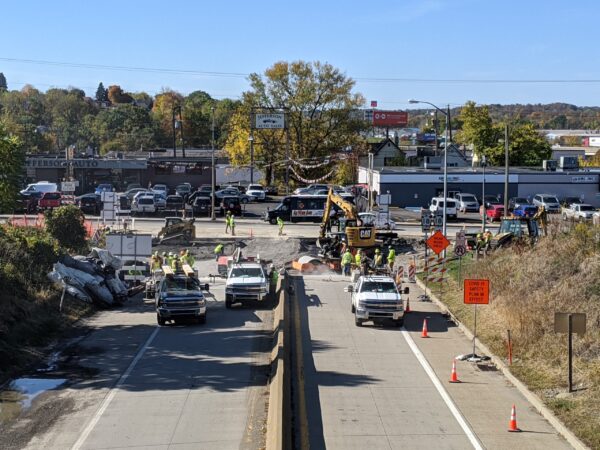

From a global perspective, investments in infrastructure development in Latin America may lag behind the U.S., Europe, Australia and Asia-Pacific. But green shoots of change and plans for major spending will be visible sooner-than-later, as the continent deals with a growing economy and urbanization.
“The Latin American Region has spent 2.5% of its GDP on infrastructure, while realistically the demand is for 5% for it to keep pace on a global scale. There is a catching up that will be required,” said Jose Amarante, Director of Business Development for Latin America with Hill International. While Mexico and Brazil have taken the lead, others are also following suit.
With a population of nearly 49 million and a GDP of $300 billion, Colombia has recently awarded 20 concessions for road projects that will link the country’s heartland of industrial and commercial activities to the Pacific and Atlantic. “It is cheaper to bring in a container from China to Colombia’s main ports than to transport them across land from the capital Bogota,” Amarante said.
Hill was awarded a contract in January in Cartagena, Colombia, with the client being COMPAS in a joint venture with APM Terminals. Hill is in a joint venture with Gómez Cajiao (a Colombian engineering firm) for a project management consultancy and supervision services contract that includes the design take-over, tender support and construction management and supervision.
The Cartagena COMPAS Expansion is a 33 month project and includes reinforcement of the existing quay, a 100-meter quay extension, dredging and reclamation areas, new pavements, buildings and electrical works.
Infrastructure projects are also planned in Peru and Panama for metro lines, Amarante said. “Argentina will also be presenting opportunities under the new government of President Mauricio Macri that has slashed export taxes and passed laws to favor investments.
We are optimistic, but there is a need to gain credibility and investors are looking cautiously,” he noted, adding other Latin American nations
For a company that has a wide portfolio of successfully providing project and construction management services for infrastructure projects in North America, Hill’s strategy for Latin America will include remaining focused on emerging opportunities, getting into JVs with local firms to gain the experience in each country and submitting competitive bids. With a population of 600 million, Latin America is a fertile area.
“Today in Brazil, we have 120 people on staff, followed by 80 in Mexico and three in Colombia,” said Amarante. With the government still being a prime source of project activity, bureaucracy plays a part and along with it the level of certification of experience required to bid. “We have a lot of work to do on that front and have started partnering with local firms,” he added.
The benefits include having a better understanding of the local rules, minimizing risks that Hill has to assume as a PM/CM firm, and drawing on the benefits of better cost control. “As a PM, our focus areas are cost control, contract administration and scheduling, while local partnering lowers our costs,” he said
In early April, Hill set a benchmark in Latin America’s marine infrastructure sector with the successful completion of the Phase 1 development of a port container terminal, Lázaro Cárdenas, in Mexico. The company provided staff augmentation services to APM Terminals for the estimated $900 million project to build a semi-automated deep-water terminal, making it the second busiest container port in Mexico with 750 meters of quay and 1.2 million TEU annual throughput capacity.
Phase 1 also saw the installation of seven ship-to-shore (STS) cranes and the new terminal being linked by intermodal rail to the U.S. rail network and to Mexico’s most important consumer market in the Mexico City area. For Hill, completing work on the Phase 1 development of Lázaro Cárdenas was a significant achievement.
Hill has also provided due diligence and project monitoring services to U.S.-based SSA Marine for a terminal it plans to build at the Port of Lázaro Cárdenas to handle automobiles, general cargo and containers. “For SSA, which is in the automobile transportation sector, we provided them our services for a Ro-Ro [roll-on and roll-off] project that is part of an export/import terminal for cars at Lázaro Cárdenas,” Amarante said.
In a partnership with engineering company, SENER, Hill is bidding for a contract to provide project management and supervision services for a greenfield specialized container terminal in the Port of Veracruz by Hong Kong-based Hutchinson Port Holdings, said Othon Pérez Martinez, Hill’s Mexico country manager. With a $ 400 million investment, the first stage of the terminal is targeted to be ready in 2018 with a capacity to handle 1.3 million containers at the initial stage.
To the south in Guatemala, Hill is looking for an emerging opportunity: a new cruise terminal along the Caribbean Sea, Pérez said. “Our primary area of expertise is in the marine infrastructure sector, with our clients being international developers,” he said, adding the company is also providing project monitoring services for two or three road projects in Mexico. “These contracts may not generate the revenues of a big-ticket PMC deal, but some of our clients are financial institutions who are aware of our reputation. That may help in the future in being awarded big projects.”
Hill’s success last year in delivering projects such as the Rio Light Rail Transit (LRT) for the Olympic Games in Brazil and, more recently, the handover of the Port of Lázaro Cárdenas facility for APM Terminals, has put the company in a position for future opportunities in Latin America.
“We are very optimistic about the region. Investments are planned in ports, roads, airports and metro lines. Social infrastructure projects such as hospitals, schools, water supply and water treatment facilities are also attracting investments. We have proven global expertise that can now be put to use in Latin America,” Amarante concluded.
Share

April 11, 2024 | Articles
A Model Move: Managing Move-In at the Sylvia H. Rambo U.S. Courthouse

April 8, 2024 | Articles

April 4, 2024 | Articles
Driving Growth and Seizing Opportunity: Lukasz Marcinkiewicz Joins Hill as Country Manager, Poland

April 1, 2024 | Articles

March 27, 2024 | Articles
Building the Future: Women’s Leadership and Community Engagement in the Construction Industry

March 25, 2024 | Articles
Leveraging Data Analytics and Dashboards for Enhanced Project Performance

February 26, 2024 | Articles
Continuity, Creativity, and Collaboration: Delivering PennDOT’s Route 18 Signal Upgrade
We and use cookies and other tracking technologies to improve your experience on our website. We may store and/or access information on a device and process personal data, such as your IP address and browsing data, for personalised advertising and content, advertising and content measurement, audience research and services development. Additionally, we may utilize precise geolocation data and identification through device scanning.
Please note that your consent will be valid across all our subdomains. You can change or withdraw your consent at any time by clicking the “Consent Preferences” button at the bottom of your screen. We respect your choices and are committed to providing you with a transparent and secure browsing experience.
| Cookie | Duration | Description |
|---|---|---|
| cookielawinfo-checbox-analytics | 11 months | This cookie is set by GDPR Cookie Consent plugin. The cookie is used to store the user consent for the cookies in the category "Analytics". |
| cookielawinfo-checbox-functional | 11 months | The cookie is set by GDPR cookie consent to record the user consent for the cookies in the category "Functional". |
| cookielawinfo-checbox-others | 11 months | This cookie is set by GDPR Cookie Consent plugin. The cookie is used to store the user consent for the cookies in the category "Other. |
| cookielawinfo-checkbox-necessary | 11 months | This cookie is set by GDPR Cookie Consent plugin. The cookies is used to store the user consent for the cookies in the category "Necessary". |
| cookielawinfo-checkbox-performance | 11 months | This cookie is set by GDPR Cookie Consent plugin. The cookie is used to store the user consent for the cookies in the category "Performance". |
| viewed_cookie_policy | 11 months | The cookie is set by the GDPR Cookie Consent plugin and is used to store whether or not user has consented to the use of cookies. It does not store any personal data. |


